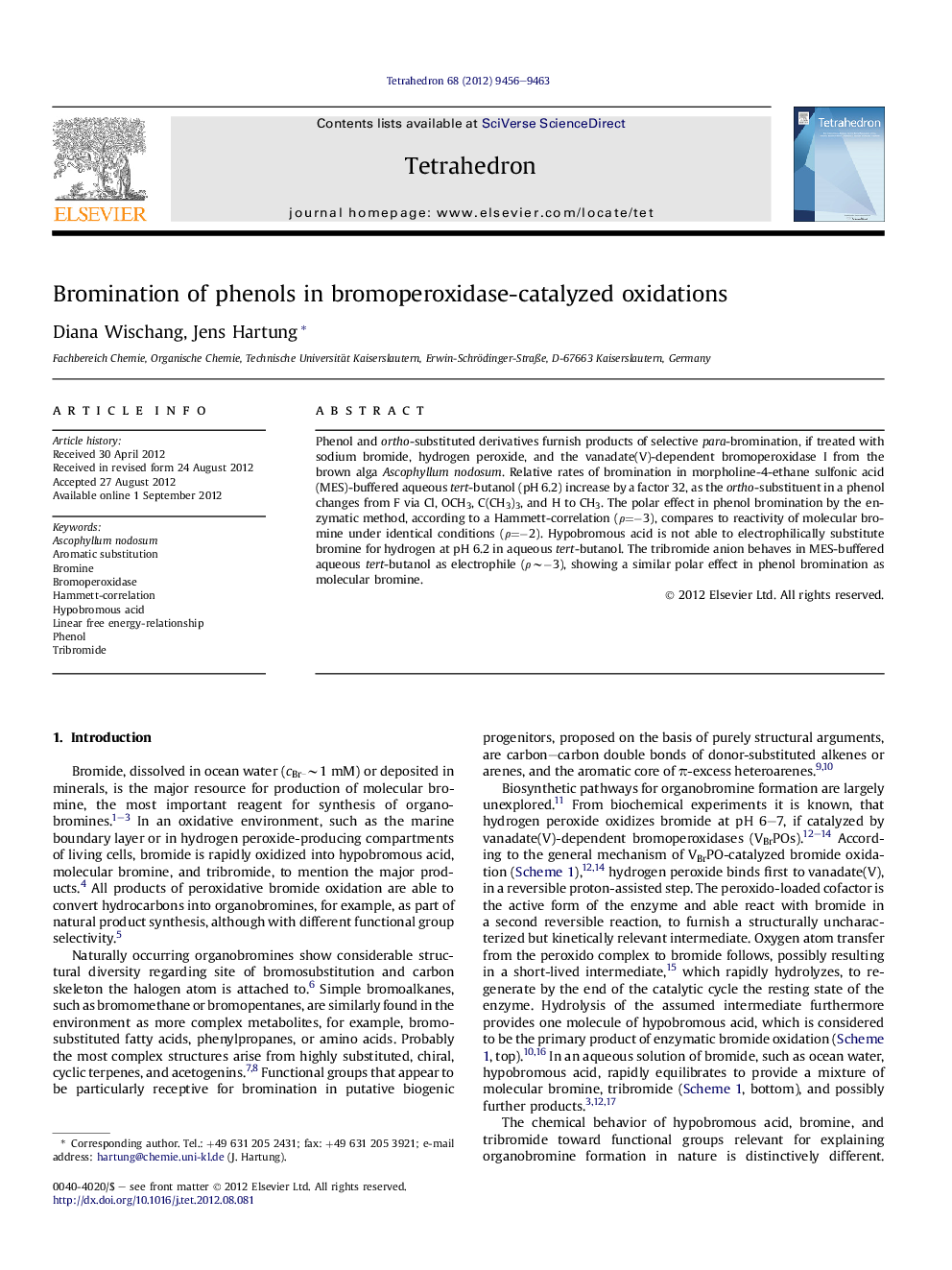| Article ID | Journal | Published Year | Pages | File Type |
|---|---|---|---|---|
| 5218174 | Tetrahedron | 2012 | 8 Pages |
Phenol and ortho-substituted derivatives furnish products of selective para-bromination, if treated with sodium bromide, hydrogen peroxide, and the vanadate(V)-dependent bromoperoxidase I from the brown alga Ascophyllum nodosum. Relative rates of bromination in morpholine-4-ethane sulfonic acid (MES)-buffered aqueous tert-butanol (pH 6.2) increase by a factor 32, as the ortho-substituent in a phenol changes from F via Cl, OCH3, C(CH3)3, and H to CH3. The polar effect in phenol bromination by the enzymatic method, according to a Hammett-correlation (Ï=â3), compares to reactivity of molecular bromine under identical conditions (Ï=â2). Hypobromous acid is not able to electrophilically substitute bromine for hydrogen at pH 6.2 in aqueous tert-butanol. The tribromide anion behaves in MES-buffered aqueous tert-butanol as electrophile (Ïâ¼â3), showing a similar polar effect in phenol bromination as molecular bromine.
Graphical abstractDownload full-size image
